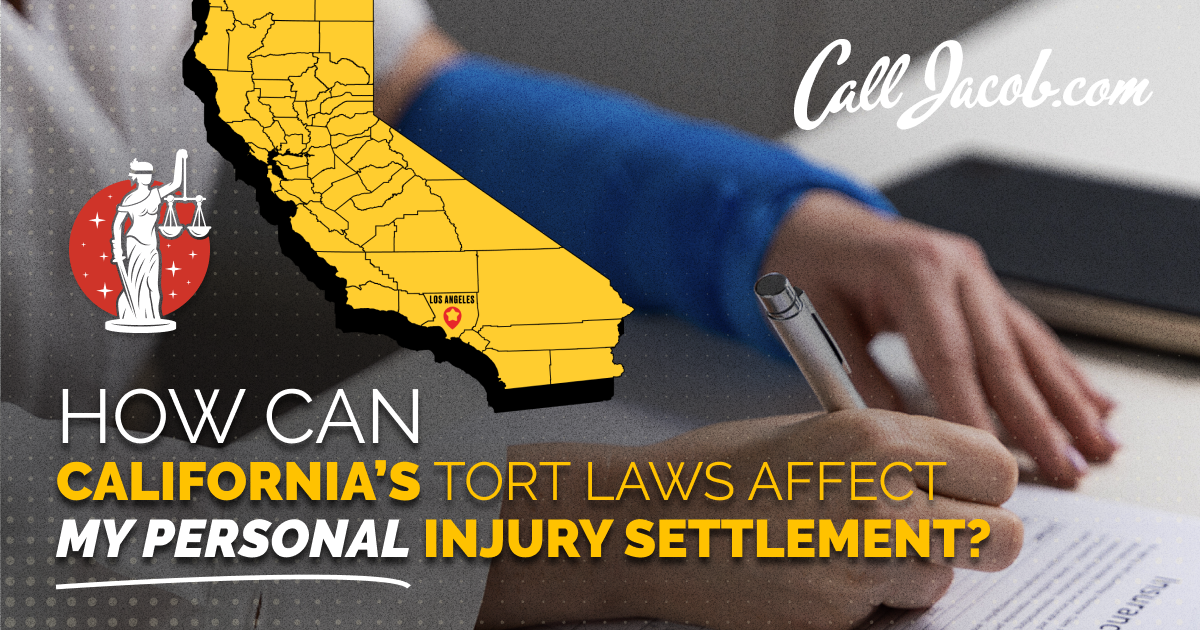California’s tort laws can impact your personal injury settlement, especially if your lawsuit involves a public agency or its employees. They are exempt from liability under the California Tort Claims Act (CTCA). But you may be able to file a claim, assuming you follow the rules. In this article, we will explain how the state’s tort laws can affect your case, how you can sue a government agency, and the damages you may be entitled to:
What Are Tort Laws?
A tort is an act or omission that causes harm to a person or property. The court must be able to easily identify the injury or damage as related to negligence or a harmful act. Tort law is the body of rules that help provide remedies to harms caused by these. It is largely a matter of state law (not federal law) with fundamental principles developed by judges rather than legislatures.
Tort law:
- Enables you to be compensated for injuries that result from wrongful conduct.
- Deters individuals from acting in ways that cause others harm.
- Provides a way to punish people who wrongfully injure someone.
Tort Laws Specific to California
You can file a personal injury lawsuit against anyone who causes you injury due to a wrongful act or negligence. But state law complicates matters if a government entity or one of its employees causes an injury. Your legal options may be limited if your car was hit by a city bus or you fell on a slippery floor at the local DMV.
Government agencies are protected under “sovereign immunity”, a principle that’s existed for hundreds of years. The California Government Code even says, “A public entity is not liable for an injury”. But that doesn’t mean you have no path to pursuing compensation for injuries or other losses. A government worker’s employer or a public entity that hired an independent contractor whose negligence led to your injury can be held liable.
How to File a Claim Under the CTCA
If you’ve suffered an injury due to a slip and fall accident, car accident, medical negligence, intentional wrongdoing, nuisance, or breach of contract, the CTCA provides a framework for civil liability claims. A government agency or entity can be responsible for an employee’s negligence. That’s assuming the negligent person acted in the scope of their employment and was carrying out a government function at the time of the incident.
You can’t file a claim against the employee directly but can file a claim with the agency they work for.
If the state government or one of its employees caused your injury, you can file a claim with the California Department of General Services. Their Office of Risk and Insurance Management handles all claims; to initiate a claim, you must complete and submit a Government Claim Form, which is available on the agency’s website. Exceptions include if you need to file a claim against Caltrans, California State University, or a city, county, or court. Each of these entities has different procedures for handling tort law claims.
What Is the Time Limit for Filing a CTCA Claim?
A claim must be filed with the government agency within six months of the date you were injured. Only then can you file a lawsuit in a state court. The government can accept or reject your claim. It usually has 45 days to do so.
You then have the following paths to filing a personal injury lawsuit:
- The government sends you a “right to sue” letter (rejecting all or part of your claim) or doesn’t respond within 45 days.
- You have filed your lawsuit within six months of receiving a “right to sue” letter.
- You didn’t receive a letter or response from the government, in which case you can file a lawsuit against the agency/entity within two years of the date of injury.
Filing a CTCA claim is different than filing a lawsuit. But a claim does provide a record of what happened. You have the option to sue or not, even if you receive a rejection, or the government can negotiate a settlement for your claim that it sees fit.
Damages You May Be Entitled To
Your prior medical history may be a factor in your claim if it involves the same body part or a similar injury. California’s tort laws ensure a negligent party isn’t responsible for prior medical problems. That’s unless a preexisting issue is made worse by an incident. Your attorney’s and an expert witness’s testimony can help prove this. If a medical condition made you more susceptible to being injured or worsened a previous injury, a negligent party or wrongdoer can still be held responsible.
A California personal injury claim can help you recover economic damages like medical bills, lost income/earning capacity, and property damage. Non-economic damages, such as pain and suffering, and punitive damages may also be awarded. The total settlement amount for similar types of cases can vary depending on your location, your attorney’s experience/reputation, and the nature and extent of your injury.
Call The Law Offices of Jacob Emrani
Our Los Angeles personal injury attorneys are familiar with all of California’s tort laws. There are legal options if you’ve been injured due to a government agency’s or employee’s negligence. We’ll provide high-quality representation and fight to obtain a settlement that covers any costs associated with their actions or omissions. To schedule your free consultation, call (888) 206-1427.



